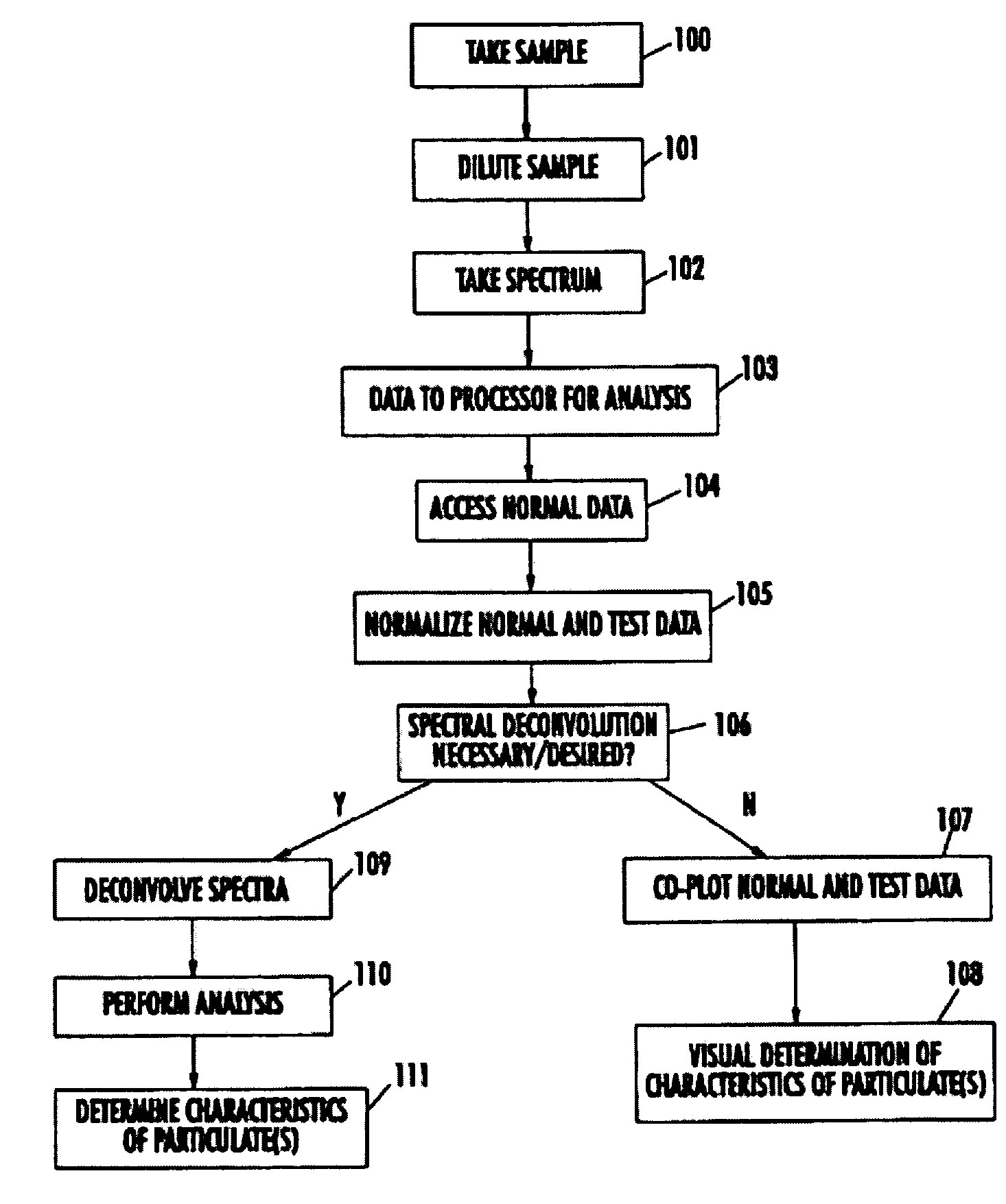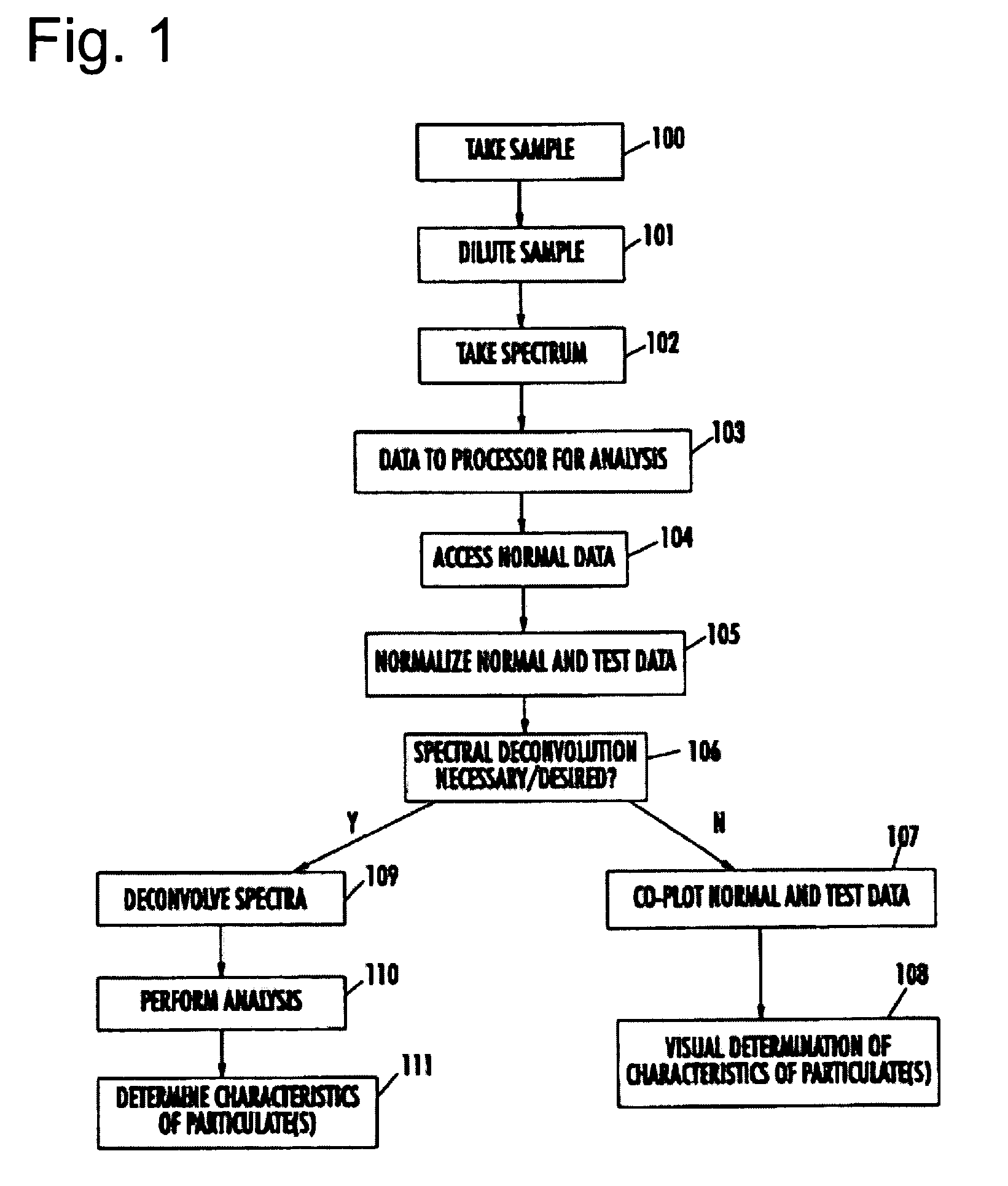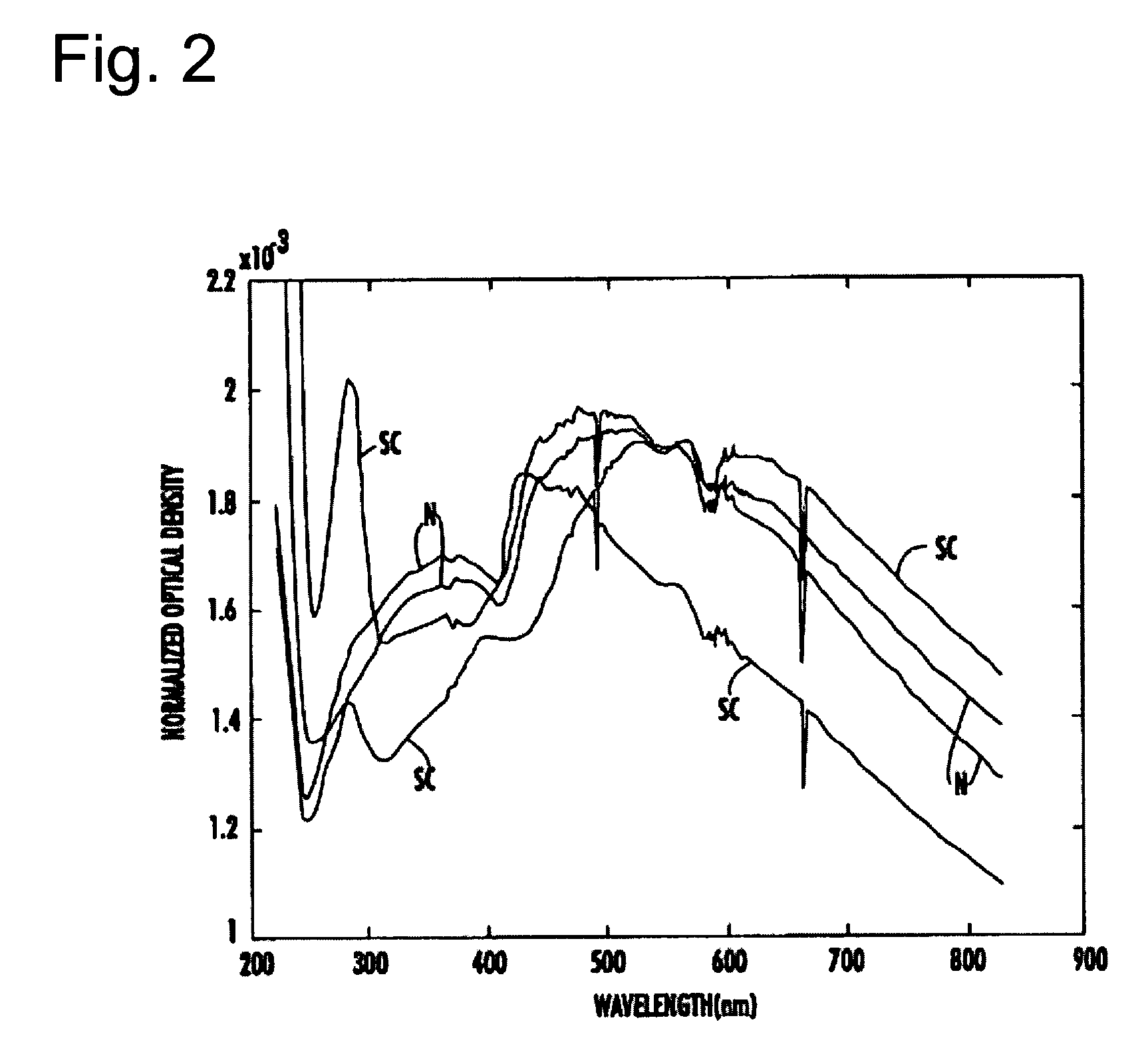Spectrophotometric system and method for the identification and characterization of a particle in a bodily fluid
a particle and spectroscopic technology, applied in the field of spectroscopic system and methods for the identification and characterization of particles in bodily fluids, can solve the problems of insufficient detection, insufficient detection, and inability to detect, classify, and count microorganisms in bodily fluids, and achieve the effect of convenient, quick, and inexpensive methods of characterization and detection
- Summary
- Abstract
- Description
- Claims
- Application Information
AI Technical Summary
Benefits of technology
Problems solved by technology
Method used
Image
Examples
Embodiment Construction
[0060]A description of the preferred embodiments of the present invention will now be presented with reference to FIGS. 1–8.
[0061]The system of the present invention comprises any of known standard spectrometers, such as a portable fiber optics-based spectrophotometer for laboratory testing, in situ measurements, and field applications. The spectrophotometer should be capable of recording the transmission, reflectance, or angular backscattering spectra of blood and other bodily fluids, neat, in solution, and in situ, in any combination or portion of the ultraviolet, visible, and near-infrared portions of the electromagnetic spectrum, preferably with a resolution of at least 2 nm. Recent developments in miniature spectrometer technology permit the use of portable multiprobe integrated systems for rapid blood characterization and diagnosis within the scope of the present invention.
[0062]An exemplary method of analyzing a fluid sample for the presence of particulates, their characteris...
PUM
 Login to View More
Login to View More Abstract
Description
Claims
Application Information
 Login to View More
Login to View More - R&D
- Intellectual Property
- Life Sciences
- Materials
- Tech Scout
- Unparalleled Data Quality
- Higher Quality Content
- 60% Fewer Hallucinations
Browse by: Latest US Patents, China's latest patents, Technical Efficacy Thesaurus, Application Domain, Technology Topic, Popular Technical Reports.
© 2025 PatSnap. All rights reserved.Legal|Privacy policy|Modern Slavery Act Transparency Statement|Sitemap|About US| Contact US: help@patsnap.com



